Did you know that companies investing in workforce competency management results in 20% overall employee performance improvement? Now the need for a strong system that allows you to track, assess, and develop the competencies of your workforce has increased. As technologies and business landscapes evolve with time, keeping your team aligned with your organization’s goals becomes necessary for success. However, selecting the best competency manager can become daunting when we have many options.
In this post, our team at CABEM will guide you through the steps to determine the best competency manager for your organization. From learning why competency management will be critical in 2025 to what key features will help you support your organization’s growth, this article is a must-read to help future-proof your workforce.
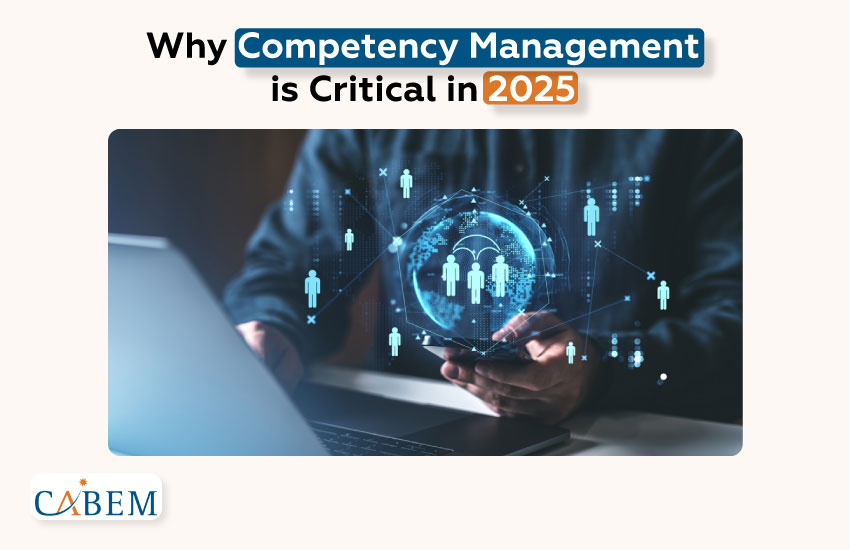
Why Competency Management is Critical in 2025
Businesses will face many revolutionary challenges in 2025. Technology is evolving, so organisations must ensure their staff are equipped with the skills needed to flourish. Competency management is now a strategic lever that allows organizations to remain competitive by aligning their workforce with their developing requirements.
The Growing Need for Competency Management
As artificial intelligence, automation, and new technologies continue to flourish, organizations cannot take a reactive approach to ensure their teams have the right skills. Competency management systems help businesses measure and evaluate these characteristics, empowering organizations to create tailored training programs and design strategic plans for talent development.
Traditional Training vs Competency-Based Management
When organizations are developing their training, they typically fall back on traditional training methods. However, as businesses grow and the workplace becomes more complicated, it’s time to rethink whether these methods are still effective. Now, let us compare the old training method and the latest competency-based management trends.
Traditional Training: A One-Size-Fits-All Approach
Traditional training approaches are more focused on generalist learning experiences. While this method can be valuable for teaching fundamental concepts, it has limitations when it comes to training them specific skills required for their jobs. These courses could be in-person, such as classroom-style sessions, online courses, or seminar sessions that offer varied information to employees. However, this often results in employees learning things that may not directly apply to their day-to-day responsibilities.
Key Characteristics of Traditional Training:
- Generic Content: The content is generic and not designed for the employee’s role.
- One-Time Learning: Most traditional training programs happen once and are not revised or updated regularly.
- Limited Engagement: Due to the generic nature of the content, employees might struggle to connect with it, resulting in a lower retention rate.
- Lack of Practical Application: Traditional training models emphasize theory over practical application.
However, traditional training programs tend to overlook the fact that 70% of learning happens on the job experience, mentoring, and peer learning. (ATD) Employees may go through these programs, but their knowledge may not correlate to improved job performance.
Why is Competency-Based Management More Effective?
Here, it is essential to understand why competency-based management is a revolutionizer. The statistics and real-world results speak for themselves.
- Better Job Performance: Organizations that utilize competency-based management experience an increase of 20% in employee performance. (Source: McKinsey)
- Higher Employee Engagement: According to research, 90% of employees become more engaged when receiving role-specific, targeted training. (Source: Harvard Business Review)
- Improved Retention Rates: According to a report conducted by Deloitte, organizations with competency-based learning and development strategies have 12% greater retention rates.
Contrasting with business needs, traditional training appears outdated and somewhat out of context. While it might enhance employees’ overall understanding, it has no direct correlation to business productivity or the firm’s operating objectives.
Thus, traditional training and competency-based management differ in that they take a one-size-fits-all approach instead of a tailored, measurable, results-driven strategy. As the workplace evolves, it is essential to ensure that your employees have the skills they need, not just the ones they are thought in a generalized training program.
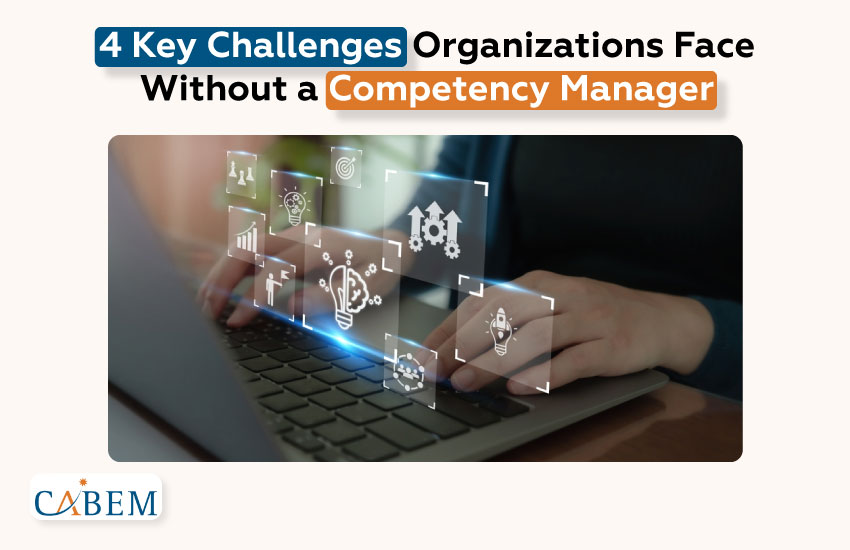
4 Key Challenges Organizations Face Without a Competency Manager
Organizations without a comprehensive competency management system face several challenges. These challenges can slow down productivity, pose compliance risks, and prove ineffective training programs.
- Compliance Risks
- Inefficient Training
- Lack of Real-Time Insights
- High Administrative Burden
1. Compliance Risks
The inability to comply with compliance matters is one of the most critical risks for an organization without a competency manager. Manually managing certifications, qualifications, and compliance requirements can result in costly errors and missed deadlines.
- Tracking certifications: Tracking employees’ certifications becomes a tedious task without a proper system.
- Audit failures: In an audit, you may not be able to show that employees are following industry or regulatory guidelines.
- Penalties: Non-compliance may result in financial penalties, loss of business, and reputational damage.
2. Inefficient Training
Without a competency management system, organizations typically waste valuable time and resources on irrelevant training interventions that fail to address employees’ actual needs.
- Misaligned training: Training sessions that are overly generalized and not focused on specific roles or competencies can ultimately lead to disengagement and decreased productivity.
- Duplication of efforts: Employees might be trained on skills they already have, wasting time and resources.
- Lack of progress tracking: Not tracking employees’ progress makes it difficult to measure the effectiveness of training programs.
3. Lack of Real-Time Insights
Organizations lacking a competency manager do not have real-time access to employee competencies. Instead of being a proactive tool for talent management, this can cause reactive decision-making.
- Delayed identification of skill gaps: With the absence of real-time data, organizations are unable to identify areas where employees need additional training.
- Missed opportunities for development: Organizations might ignore the chances for developing and growing their employees.
- Inability to pivot: Companies cannot quickly adapt to evolving skill requirements or market conditions due to a lack of real-time insights.
4. High Administrative Burden
Managing competencies manually can create a significant administrative burden, draining valuable resources from more strategic tasks.
- Manual record-keeping: Keeping track of performance and certifications alongside training becomes exhausting if done manually.
- Inefficient reporting: Reporting competencies, compliance, and training progress is much more difficult without an automated system.
- Increased workload: HR and management teams spend more time on administrative processes, which affects their ability to work on strategic initiatives.
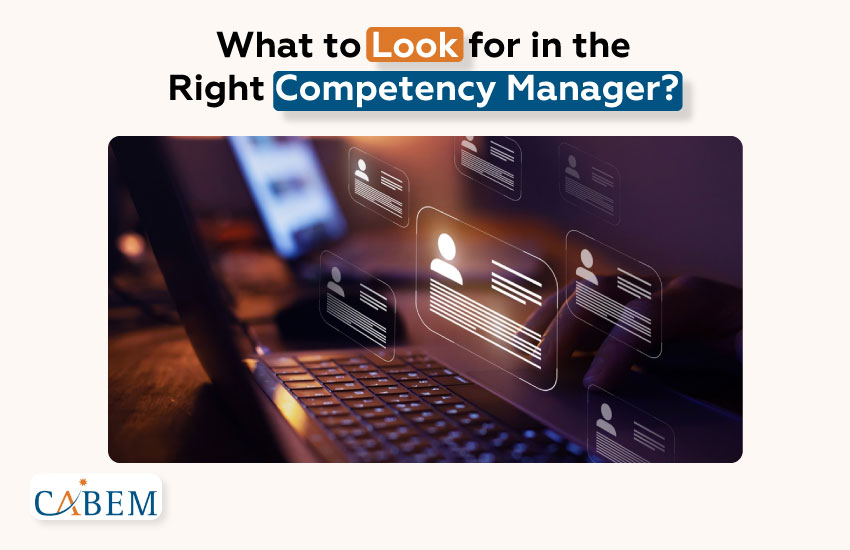
What to Look for in the Right Competency Manager
Now that we have discussed the challenges, let’s examine how to find the right competency management system for your organization. The right system will consolidate your processes, ensure compliance, and provide transparency, enabling you to make informed decisions.
- Customization & Industry Fit
- Automated Compliance Tracking & Reporting
- Seamless Integration with Existing Systems
- Scalability & Future-Proofing
- User-Friendly Interface & Accessibility
1. Customization & Industry Fit
Each organization has its requirements and goals, which your competency management system should reflect. Seek a solution that allows you to customize the system to your unique needs.
- Industry-specific templates: Find a competency manager designed to fulfill your industry’s standards and regulations.
- Flexible competency frameworks: Make sure your system will allow you to create competency models relevant to your organization.
- Tailored training plans: The system must help you create training plans that meet the specific needs of your workforce.
2. Automated Compliance Tracking & Reporting
Compliance is an integral part of competency management. The right solution will streamline compliance tracking and offer real-time reporting.
- Automated reminders: The system must notify the user about deadlines associated with certification renewals and other compliance obligations.
- Audit-ready reports: Ensure the system can produce reports that show compliance to auditors anytime they request one.
- Document tracking: Another key feature to satisfy compliance is tracking documents such as training materials, certifications, approvals, etc.
3. Seamless Integration with Existing Systems
The competency manager you opt for must integrate seamlessly with your existing HR systems and LMS (Learning Management Systems). This will allow the smooth flow of data and prevent redundant work.
- Easy integration: Verify that the system will easily integrate with your HRIS, LMS, and other platforms.
- Data synchronization: Find a system that automatically synchronizes data between all platforms, keeping accurate records.
- Minimal disruption: The setup process should be fast and not disrupt your existing operators.
4. Scalability & Future-Proofing
Your competency management system should grow in capability as your organization grows. Seek a system that is both adaptable and has potential for future advancements.
- Scalable features: The system should be designed to support growing numbers of users and additional competencies.
- Cloud-based solutions: Cloud-based systems offer greater scalability, as they can accommodate large datasets without performance degradation.
- Regular updates: The system should implement changes to conform to the benchmarks of the field and AI technology.
5. User-Friendly Interface & Accessibility
User Experience is key to ensuring high adoption within your organization. The system should be intuitive across employees at all levels of the organization.
- Intuitive design: Non-technical users must be able to navigate an intuitive interface easily.
- Mobile compatibility: Make sure the system is mobile-friendly so employees can log on and track their progress seamlessly.
- Accessibility features: Find a system that provides accessibility features for employees with disabilities.
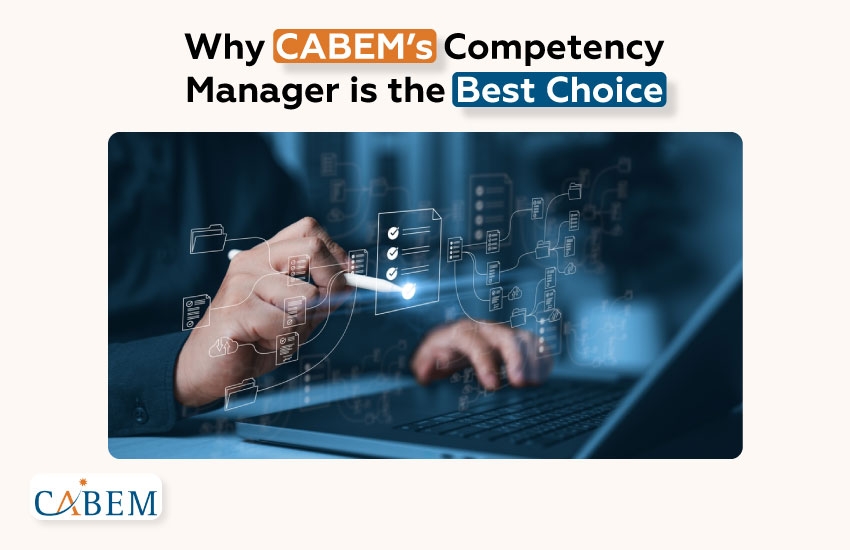
Why CABEM’s Competency Manager is the Best Choice
At CABEM, we understand the challenges organizations face when managing their competencies. That’s why we created the CABEM Competency Manager, a custom-built solution that is scalable, intuitive, and customizable to meet every organization’s goals.
- Trusted by Regulated Industries
- Fully Customizable for Your Workforce Needs
- Automated Compliance & Real-Time Skill Tracking
- Seamless Integration with HR & Training Systems
- Proven Success Stories
1. Trusted by Regulated Industries
Organizations trust our Competency Manager in highly regulated industries such as healthcare, finance, and manufacturing. We meticulously follow all compliance requirements, which results in easy-to-generate audit reports.
2. Fully Customizable for Your Workforce Needs
CABEM’s solution is entirely configurable to the requirements of your organization. You can customize the competency models, training plans, and workflows to fit your company objectives.
3. Automated Compliance & Real-Time Skill Tracking
Our Competency Manager works by automating compliance tracking and generating real-time insights into employee competencies. This keeps you ahead of the curve and allows you to make proactive decisions.
4. Seamless Integration with HR & Training Systems
CABEM’s Competency Manager can easily integrate with your current HR and training systems. This guarantees a seamless transition while preventing overlapping resources and, more importantly, allows you to focus on upskilling your workforce.
5. Proven Success Stories
Client satisfaction continues to soar as they report reduced operational inefficiency, increased employee productivity, and easier compliance audits. CABEM has helped several businesses cut down on their administrative workload while simultaneously increasing training efficiency and improving competency management.
Note: Learn how competency management software enables operational competency, enhances employee productivity, and ensures compliance. Read our article on Top 6 Industries That Benefit from Competency Management Software to know more!
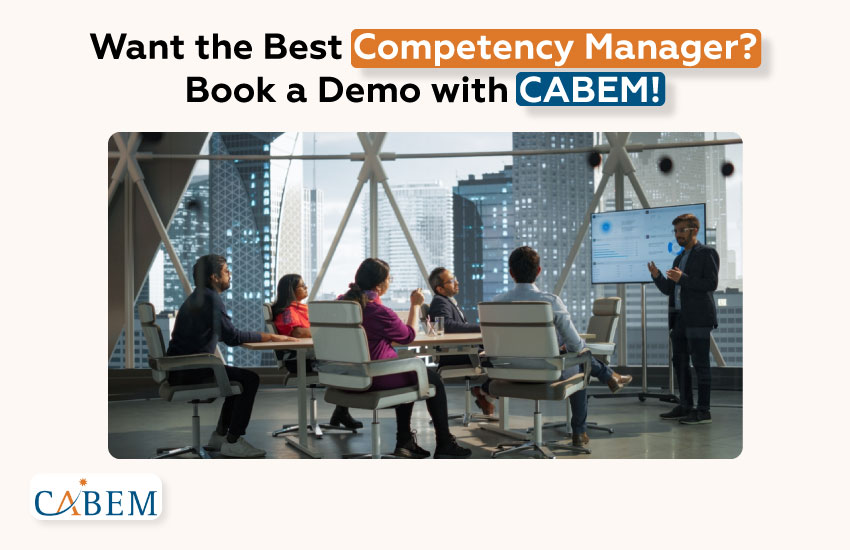
Want the Best Competency Manager? Book a Demo with CABEM!
Selecting the right competency manager guarantees that the workforce is adequately skilled according to the organization’s requirements and goals. Choosing a customizable, scalable, and easy-to-integrate solution streamlines training, ensures compliance, and increases employee productivity. CABEM’s Competency Manager is a fully customizable and easy-to-use platform used in regulated industries that has been proven to generate results.
Are you ready to reach the next level of success with your workforce by enhancing their skills through structured, guided competency management? Then, schedule a demo with CABEM to see how our competency manager can meet compliance and efficiency needs while dynamically driving employee performance.
FAQs
1. What is a competency-based management system?
A competency-based management system is a managerial tool designed to enable organizations to evaluate, monitor, and foster employees’ skill sets, attitudes, and knowledge towards mastering their job roles. It helps to keep the organization’s talent management systems (recruitment, training, performance evaluation, etc.) in line with the competencies required to achieve business objectives.
2. What is a competency-based system?
A competency-based system is a management-oriented program that helps an organization establish, analyze, and maintain the competencies of employees on the job. The primary focus of this system is a combination of both intellectual and behavioral skills, making certain that the workers can perform all the necessary tasks towards achieving your business goals.
3. What challenges do you face in applying your competencies effectively?
Competencies are difficult to implement properly, especially when there is no system to help monitor and develop them.
Here are some common issues:
- Difficulty aligning competencies with business goals.
- Inconsistent application of competencies across departments.
- Lack of real-time data to assess skill gaps.
- Resistance to change from employees or leadership.
- Limited resources for ongoing training and development.

